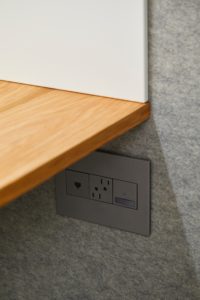There is too much to manage in your family and in life to take on electrical issues. Entrust our Lake Mary electricians that will be prompt and give you the best rates. Sanford Electric Company II, Inc. shares common types of electrical wire used in homes, so you can better understand what is in your home.
Sanford electricians are also Lake Mary electricians:
First off, our Lake Mary electricians do not expect you to completely understand everything we are discussing today. However, you better believe your reliable Sanford electricians do. If there is anything about your electrical system you do not understand, just give us a call to speak with a Sanford electrician.
In order to begin today’s discussion, we must first review the basics of electrical terminology. Knowing the basic wire types is essential in any electrical project, whether that be residential or commercial. When a professional is installing new wiring, selecting the correct wire or cable is half the battle.
Likewise, when examining existing wiring in a home, identifying the type of wire can tell you a lot about the circuit the wiring belongs to. For example, say you open up a junction box, you must know which wire goes where. The wiring in modern homes is quite standard.
Most homes built somewhere after the seventies have similar methods and product of wiring. Any new electrical installation that requires new wiring must conform to local building codes. Let’s get started.
Wiring terminology:
 Before we get into detail, how about we share some of the basic terminology? An electrical wire is a conductor. Really going back to basics, a conductor is a material that conducts electricity.
Before we get into detail, how about we share some of the basic terminology? An electrical wire is a conductor. Really going back to basics, a conductor is a material that conducts electricity.
In household wiring, or residential wiring, the conductor is usually made of copper or aluminum. Alternatively, it may be copper-sheathed aluminum. The conductor is either a solid metal conductor or stranded wire.
Lake Mary electricians inform us that most wires in homes are insulated. In this case, insulated means the wires are wrapped in a nonconductive plastic coating. An exception to this rule is ground wires.
Types of wires in homes:
Ground wires are typically solid copper. They are either insulated with green sheathing or are left bare, uninsulated. The most common wiring found in homes are nonmetallic cable, or NM cable.
NM cable consists of two or more individual wires wrapped inside a protective plastic sheathing. Nonmetallic cable most often contains one or more “hot” wires, or current carrying wires. Plus NM cable contains a neutral wire and a ground wire.
 Found as an alternative to NM cable, individual wires can be installed of a rigid, flexible, metal, or plastic tubing called conduit. It is usually used where wiring will be exposed (not hidden in walls, floors, or ceilings.) As seen on the left, wires should be seamlessly unseen. Some wires in your home may be carrying circuit voltage which can be very dangerous for a human or pet to touch.
Found as an alternative to NM cable, individual wires can be installed of a rigid, flexible, metal, or plastic tubing called conduit. It is usually used where wiring will be exposed (not hidden in walls, floors, or ceilings.) As seen on the left, wires should be seamlessly unseen. Some wires in your home may be carrying circuit voltage which can be very dangerous for a human or pet to touch.
There are also wires in your home that carry much less voltage but can still pose threats. These wires can be dangerous around liquids or kids, but the voltage is so low it may not even shock an adult. However, never assume wires are safe to touch.
Simply leave all the electrical matters to our experienced electricians. People that are not trained professionals should never assume the type of wiring is not dangerous. Assume all wiring is dangerous to avoid harm.
Come back next week:
Next week, we will be informing readers of other cable and wire basics! Stop by next time for more electrical information. Thanks for coming by this week, and make an appointment with our electricians before touching any wiring.
We are closely to neighboring cities such as Lake Mary, Orange City, and Longwood. I guess you could say we are also Lake Mary electricians!
Staff Writer
